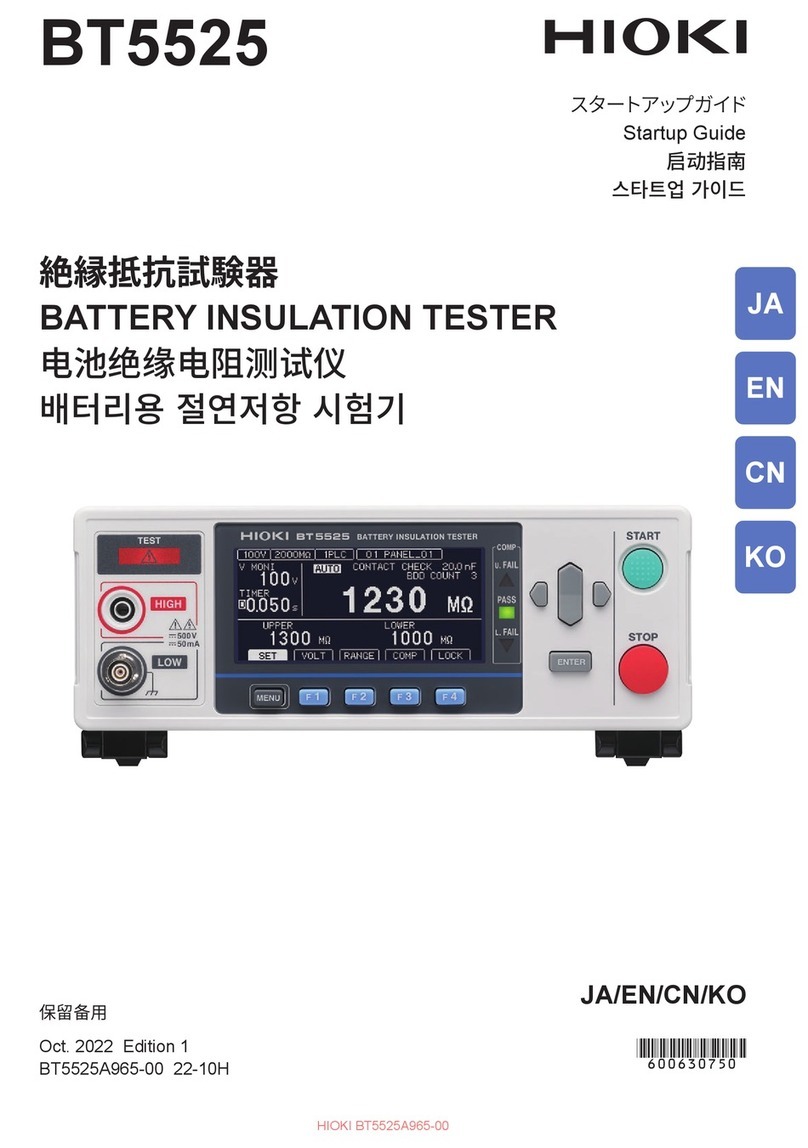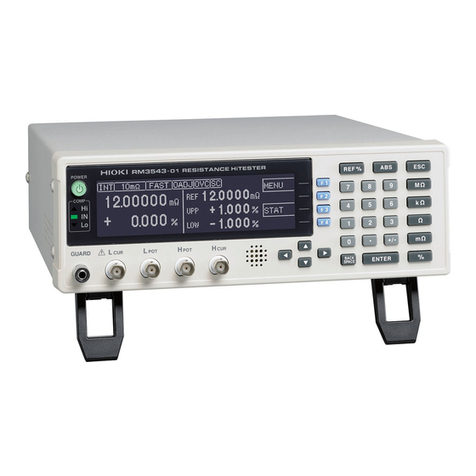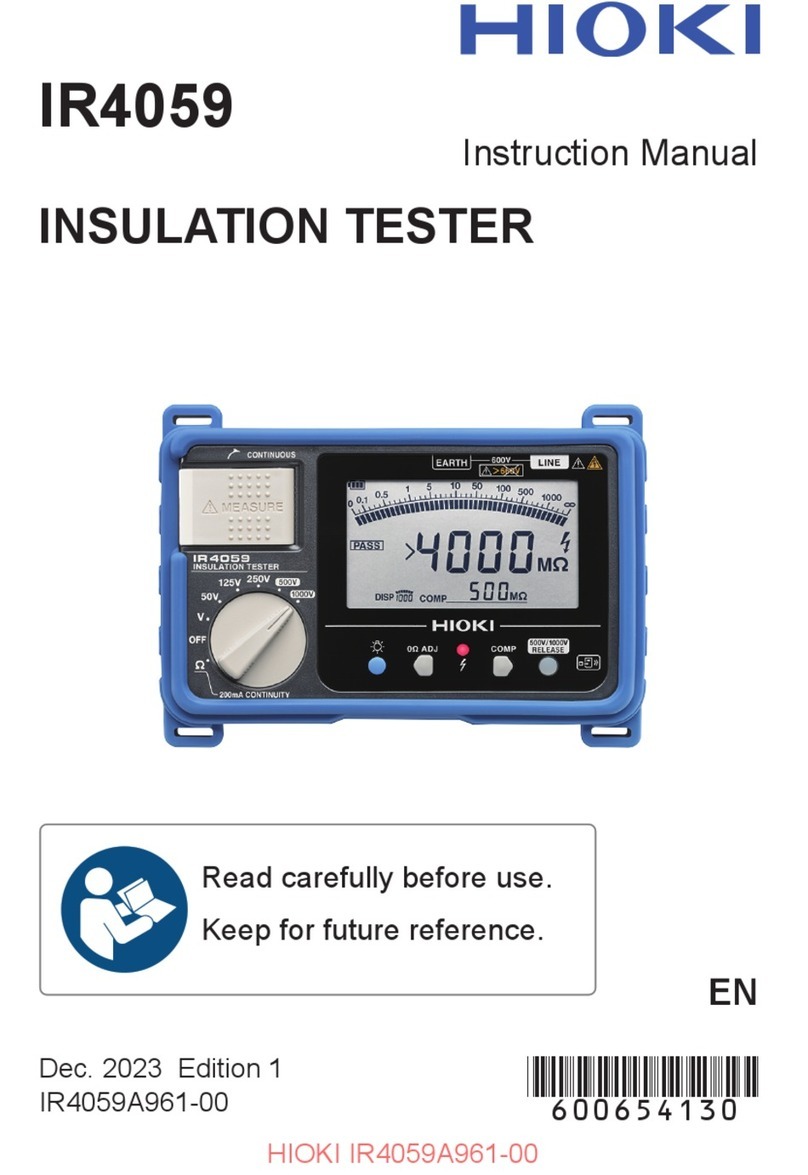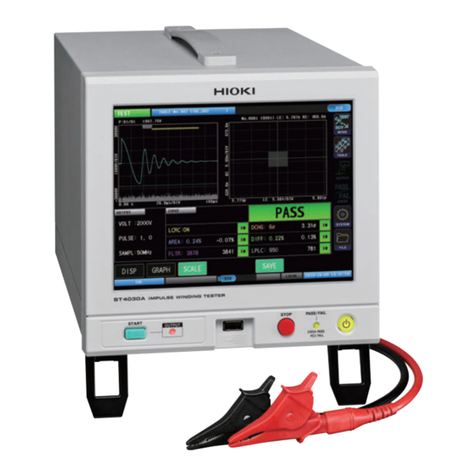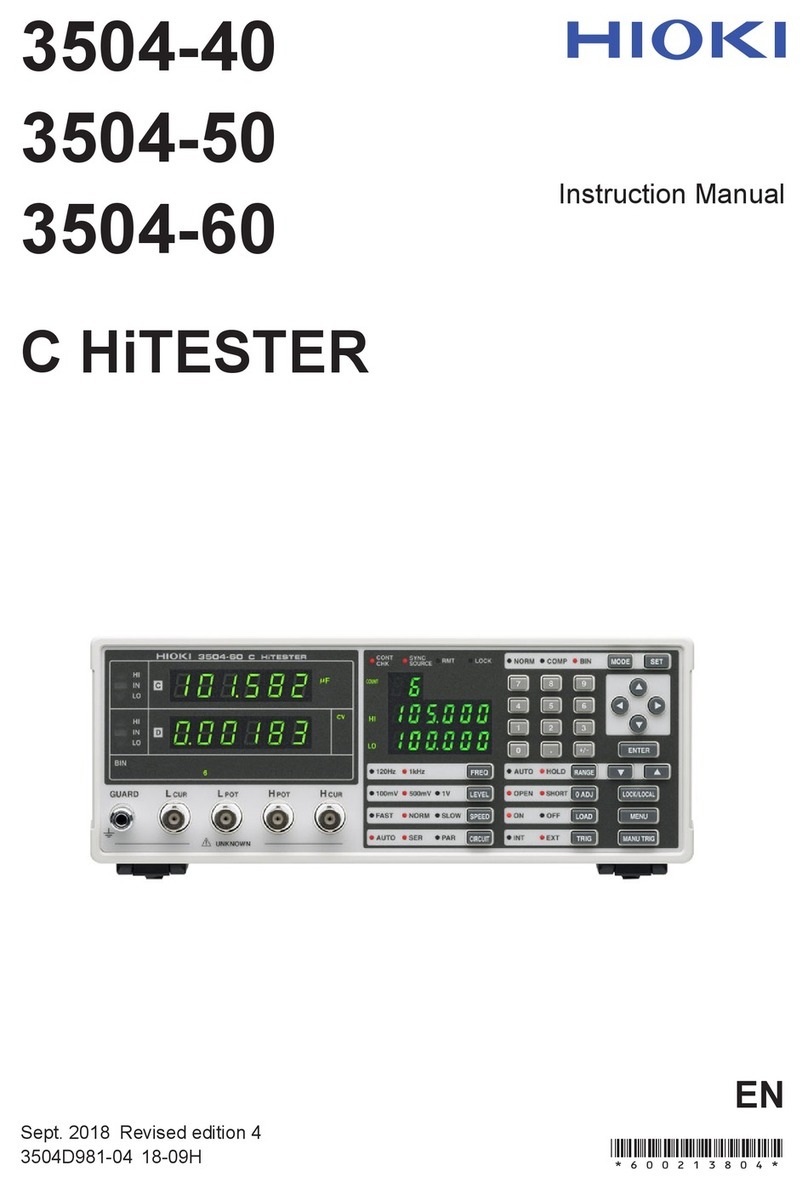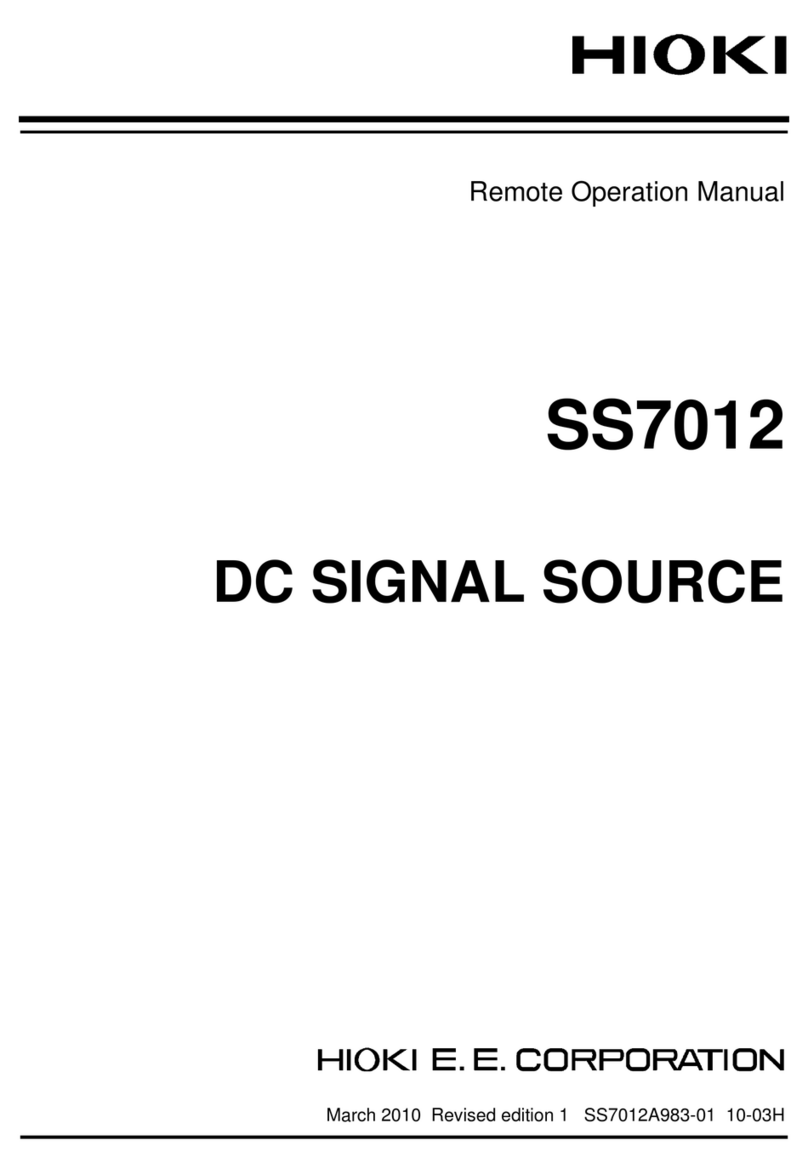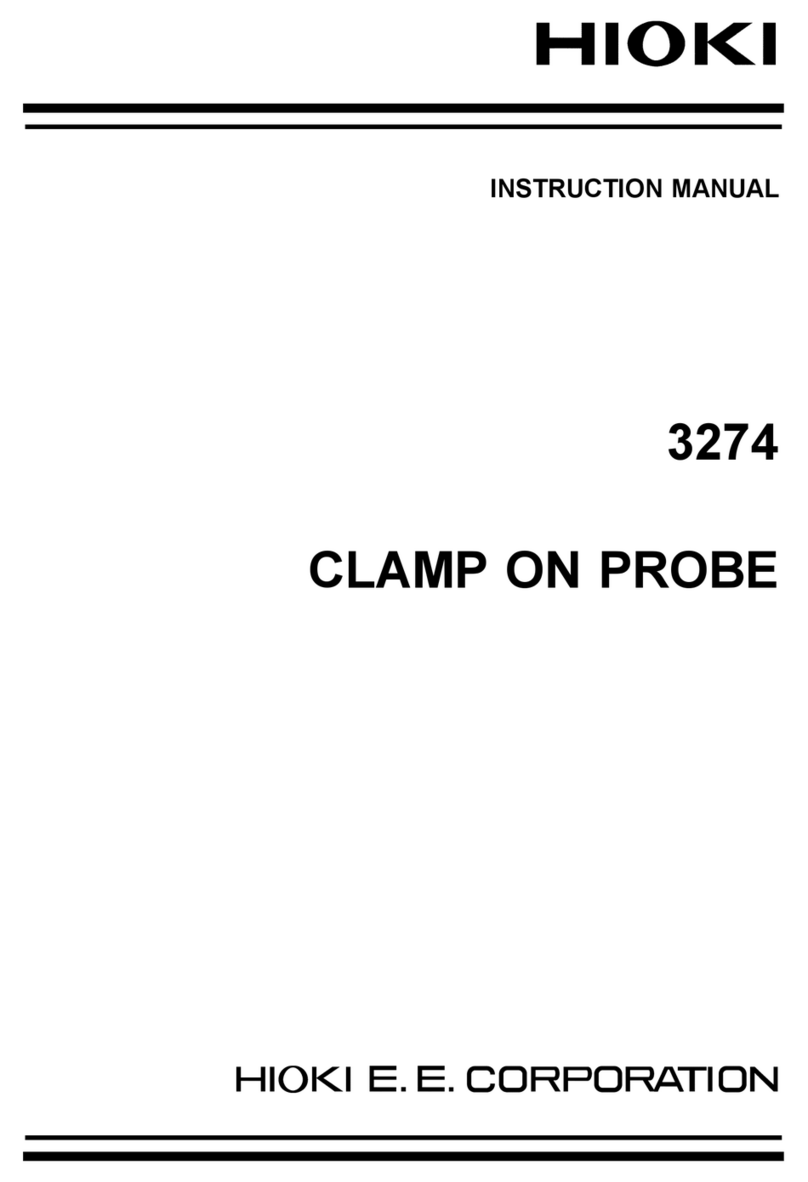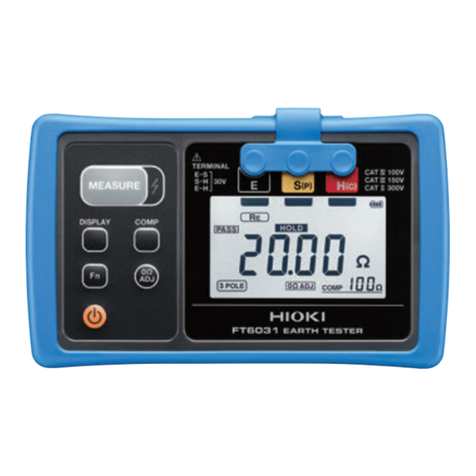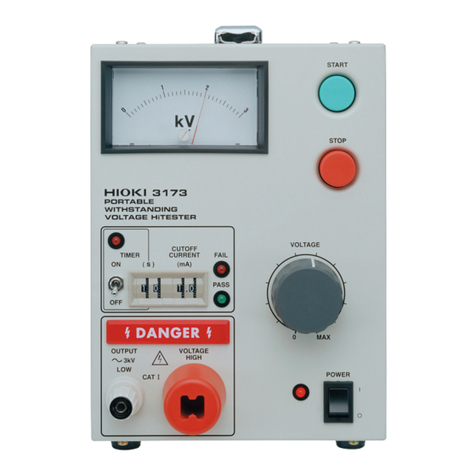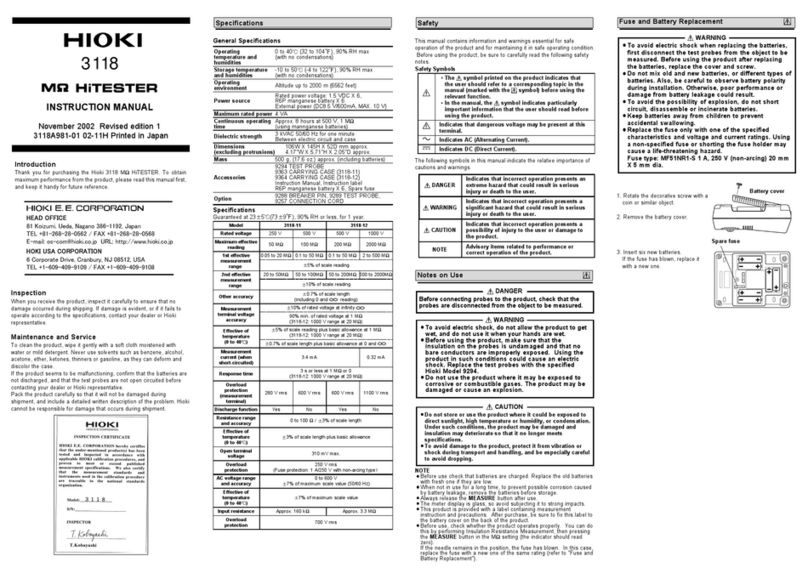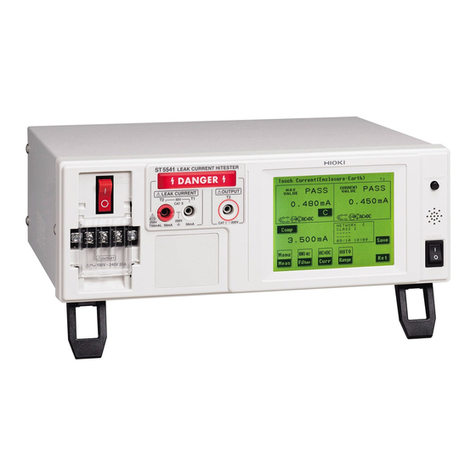
4.3.15 Setting the Wave Colors 69
4.3.16 Setting the Display Scale 70
4.3.17 Octave Filter Setting 71
4.4 Printout of FFT Processing Results
(When 8994 PRINTER UNIT is installed.) 72
4.4.1 Setting the Print Mode 72
4.4.2 Setting the Auto Print Function 72
4.5 Setting the Auto Save Function 73
4.6 Settings on the Waveform Display Screen (FFT) 75
4.7 Start and Stop Operation (FFT) 76
4.8 FFT Analysis Function 77
4.8.1 Storage Waveform [STR] 77
4.8.2 Linear Spectrum [LIN] 78
4.8.3 RMS Spectrum [RMS] 80
4.8.4 Power Spectrum [PSP] 81
4.8.5 Auto Correlation [ACR] 83
4.8.6 Histogram [HIS] 84
4.8.7 Transfer Function [TRF] 85
4.8.8 Cross Power Spectrum [CSP] 87
4.8.9 Cross Correlation [CCR] 89
4.8.10 Unit Impulse Response [IMP] 90
4.8.11 Coherence [COH] 91
4.8.12 Octave Analysis [OCT] 92
Chapter 5 Input Channel Settings 97
5.1 Overview 98
5.2 Setting the Variable Function 99
5.3 Scaling Function (SYSTEM) 102
5.3.1 Setting the Scaling Function 103
5.3.2 Scaling Setting Example 106
5.4 Comment Function (CHANNEL) 107
5.4.1 Title Comment Entry 107
5.4.2 Analog/Logic Channel Comment Entry 108
5.4.3 Character Entry Procedure 109
5.5 Copying Channel Settings 110
5.6 Setting the Waveform Display Screen 111
5.6.1 Entering by F9 (CH.SET) Key 111
5.6.2 Entering by CH.SET Key 112
5.6.3 Setting the Vernier Function 113
5.7 Setting the Probe Voltage Division Ratio 114

